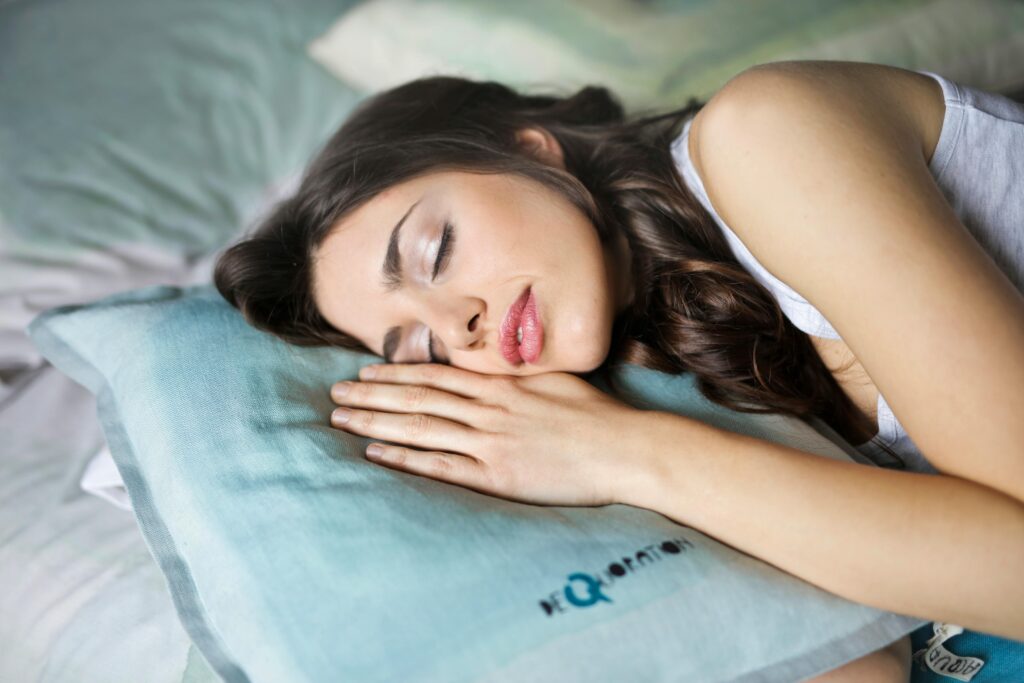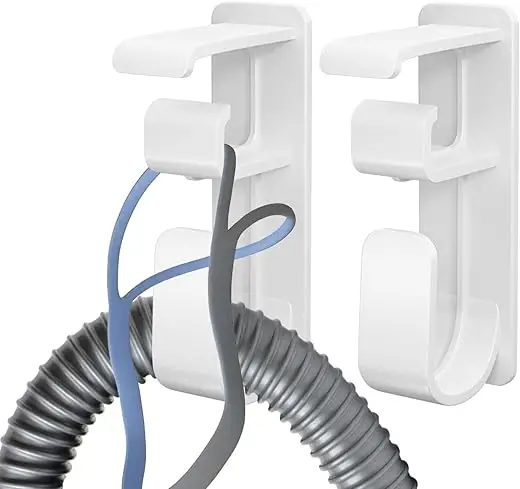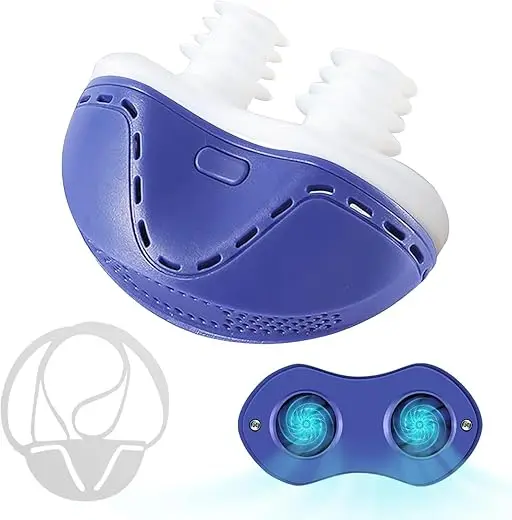Sleep apnea affects over 39 million Americans, yet 80% of cases remain undiagnosed. This comprehensive guide covers everything you need to know about sleep apnea, from recognizing symptoms to exploring the latest treatment options available in 2025.
What Is Sleep Apnea?
Sleep apnea is a serious sleep disorder where breathing repeatedly stops and starts during sleep. These interruptions, called apneas, can last from a few seconds to minutes and may occur 30 times or more per hour. Each time breathing resumes, you might snort, choke, or gasp for air, disrupting your sleep cycle without fully waking you.
The condition does more than just cause poor sleep—it deprives your body of oxygen and puts tremendous strain on your cardiovascular system. Left untreated, sleep apnea can lead to serious health complications including heart disease, stroke, diabetes, and cognitive decline.
Types of Sleep Apnea
Understanding the different types of sleep apnea is crucial for proper diagnosis and treatment:
1. Obstructive Sleep Apnea (OSA)
The most common form, affecting about 84% of sleep apnea cases. OSA occurs when throat muscles relax during sleep, causing the airway to collapse or become blocked. Risk factors include:
- Excess weight
- Large neck circumference
- Narrow airway
- Being male
- Age over 40
- Family history
2. Central Sleep Apnea (CSA)
Less common but equally serious, CSA happens when your brain fails to send proper signals to the muscles that control breathing. This type is often associated with:
- Heart disorders
- Stroke
- Brain tumors
- Long-term opioid use
- High altitude exposure
3. Complex Sleep Apnea Syndrome
Also called treatment-emergent central sleep apnea, this occurs when someone with OSA develops CSA after beginning CPAP therapy. It affects about 15% of CPAP users and requires specialized treatment approaches.
Recognizing Sleep Apnea Symptoms
Sleep apnea symptoms can be subtle and are often first noticed by bed partners. Key warning signs include:
Nighttime Symptoms:
- Loud, chronic snoring
- Gasping, choking, or snorting during sleep
- Breathing pauses observed by others
- Restless sleep or frequent position changes
- Night sweats
- Frequent nighttime urination
Daytime Symptoms:
- Excessive daytime fatigue despite “adequate” sleep
- Morning headaches
- Dry mouth or sore throat upon waking
- Difficulty concentrating or memory problems
- Mood changes, irritability, or depression
- Decreased libido
- Falling asleep during routine activities
Who’s at Risk?
While sleep apnea can affect anyone, certain factors increase your risk:
Major Risk Factors:
- Obesity: Fat deposits around the upper airway can obstruct breathing
- Age: Risk increases with age, though it can occur at any age
- Gender: Men are 2-3 times more likely to have sleep apnea
- Family History: Genetic factors play a significant role
- Neck Circumference: Greater than 17 inches in men or 16 inches in women
Contributing Factors:
- Smoking (3x higher risk)
- Alcohol use
- Sedative medications
- Nasal congestion
- Medical conditions (diabetes, high blood pressure, PCOS)
The Diagnosis Process
Getting diagnosed with sleep apnea typically involves:
1. Initial Consultation
Your doctor will review your symptoms, medical history, and perform a physical examination focusing on:
- Throat, nose, and mouth structure
- Neck circumference
- Blood pressure
- Body mass index (BMI)
2. Sleep Study Options
In-Lab Polysomnography (PSG)
- Comprehensive overnight monitoring in a sleep center
- Measures brain waves, oxygen levels, heart rate, breathing patterns
- Most accurate but more expensive and less convenient
Home Sleep Apnea Test (HSAT)
- Simplified testing in your own bed
- Measures breathing, oxygen levels, and heart rate
- More affordable and convenient
- Suitable for suspected moderate to severe OSA
3. Understanding Your Results
Sleep apnea severity is measured by the Apnea-Hypopnea Index (AHI):
- Normal: Fewer than 5 events per hour
- Mild: 5-14 events per hour
- Moderate: 15-29 events per hour
- Severe: 30 or more events per hour
Treatment Options in 2025
Gold Standard: CPAP Therapy
Continuous Positive Airway Pressure remains the most effective treatment:
- Delivers constant air pressure to keep airways open
- 90% effective when used properly
- Modern machines are quieter and more comfortable
- Smart features track usage and adjust pressure automatically
Alternative Treatments
Oral Appliances
- Custom-fitted devices that reposition the jaw
- Best for mild to moderate OSA
- 60-70% effective for suitable candidates
- More portable than CPAP
Inspire Therapy
- FDA-approved implantable device
- Stimulates airway muscles during sleep
- No mask or machine required
- 79% reduction in sleep apnea events
Surgical Options
- UPPP (removal of excess throat tissue)
- Jaw advancement surgery
- Nasal surgery
- Weight-loss surgery for severe obesity
Lifestyle Modifications
- Weight loss (10% reduction can improve symptoms by 30%)
- Position therapy (avoiding back sleeping)
- Avoiding alcohol and sedatives
- Treating nasal congestion
- Regular exercise
Health Consequences of Untreated Sleep Apnea
Ignoring sleep apnea can lead to serious complications:
Cardiovascular Problems
- 2-3x higher risk of high blood pressure
- 140% increased stroke risk
- Higher rates of heart failure
- Irregular heartbeats (atrial fibrillation)
Metabolic Issues
- Type 2 diabetes (80% of diabetics have OSA)
- Metabolic syndrome
- Fatty liver disease
- Weight gain and difficulty losing weight
Cognitive and Mental Health
- Memory problems and cognitive decline
- 2x higher risk of depression
- Increased anxiety
- Higher risk of accidents (7x more likely)
Other Complications
- Complications with medications and surgery
- Liver problems
- Sexual dysfunction
- Premature death (3x higher mortality risk)
Living with Sleep Apnea
Daily Management Tips:
- Maintain Treatment Compliance: Use your prescribed treatment every night
- Track Your Progress: Monitor symptoms and treatment effectiveness
- Regular Follow-ups: See your sleep specialist annually
- Join Support Groups: Connect with others managing sleep apnea
- Educate Family Members: Help them understand and support your treatment
Travel Considerations:
- Bring your CPAP or oral appliance
- Pack extra supplies
- Check airline policies for medical devices
- Consider portable or travel-sized equipment
- Bring your prescription and sleep study results
Latest Developments in 2025
Emerging Technologies:
- AI-Powered Diagnosis: Machine learning improving home test accuracy
- Smart CPAP Machines: Real-time adjustments and predictive features
- Wearable Monitors: Continuous tracking via smartwatches
- Telemedicine: Remote consultations and treatment adjustments
New Treatment Options:
- GLP-1 Medications: Ozempic and similar drugs showing promise
- Hypoglossal Nerve Stimulation: Next-generation implants
- Combination Therapies: Integrated treatment approaches
- Precision Medicine: Genetic testing for personalized treatment
When to Seek Help
Don’t wait if you experience:
- Loud snoring disturbing others
- Witnessed breathing pauses
- Excessive daytime sleepiness affecting daily life
- Morning headaches several times per week
- Difficulty staying asleep
Early diagnosis and treatment can prevent serious health complications and dramatically improve your quality of life.
Finding Treatment Near You
When seeking treatment:
- Start with your primary care physician
- Request referral to a board-certified sleep specialist
- Verify insurance coverage for sleep studies
- Research accredited sleep centers in your area
- Consider CPAP suppliers with good support services
Conclusion
Sleep apnea is a serious but treatable condition. With proper diagnosis and treatment, most people experience significant improvement in their symptoms and overall health. Whether through CPAP therapy, oral appliances, surgery, or newer treatments like Inspire, there’s a solution that can work for you.
Don’t let sleep apnea control your life. Take the first step toward better sleep and better health by discussing your symptoms with a healthcare provider today. With the right treatment, you can reclaim restful nights and energetic days.
Remember: This guide provides general information about sleep apnea. Always consult with qualified healthcare professionals for personalized medical advice and treatment recommendations.



